Scary seafood: How to cook abalone, marron, mud crab, squid, sea urchin
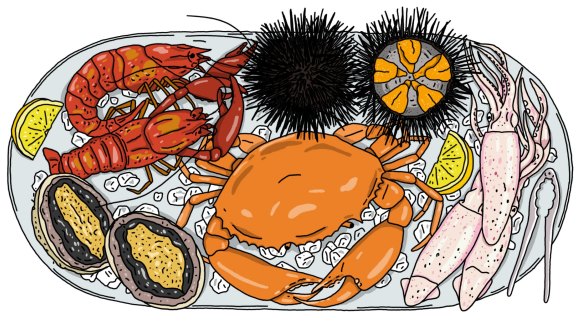
You've held on to your fear of preparing seafood for too long. Now's the perfect time to experiment with the ocean's bounty. The tougher the task, the more delicious the result.
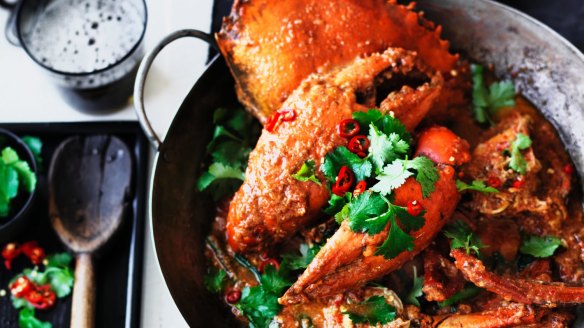
Mud crab
What is it?
These giant crustaceans love getting down and dirty – you'll find these guys soaking in silty mangrove waters, muddy tidal flats and shallow river estuaries all along the Australian coast.
Why is it special?
If size does matter, mud crabs have got it going on. The body usually grows between 17 and 30 centimetres, and their thick, robust claws produce decent chunks of firm, fleshy meat. They're hefty beasts, too, weighing anywhere between 500 grams and three kilograms. Yes, this means the price is high but it's worth paying up for their sweet flavour and juicy meat.
How do I prepare it?
Mud crabs are usually sold live and you should try to pick one that has its shell firmly intact without any discolouration near the joints – a sign that it's been out of the water for a while. Watch those claws: the strong pincers can remain in a painful grip even when the arm is detached from the body; use heavy-duty gloves and large tongs when handling. The most humane way to prepare crabs is to put them in the freezer for 45 minutes to knock them out, then promptly drop them in rapidly boiling water for about five minutes (depending on size) until the shell turns red. The general rule is 80-90 seconds per 100 grams.
How do I eat it?
Chef Dan Hong suggests boiling in a deep pot of salted water infused with aromatics such as ginger, star anise, garlic, onions, herbs and shao hsing wine, and serving with rice. You can also pick plain cooked meat from the shell and add to a pan of hot olive oil, white wine, garlic and chilli. Toss the mixture with freshly cooked linguine, a good heaping of chopped parsley and a squeeze of lemon. Or try Adam Liaw's Singapore chilli mud crab recipe.
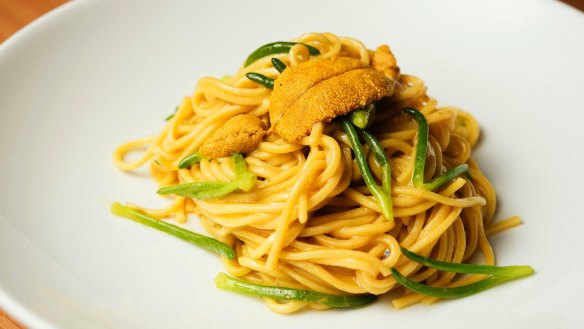
Sea urchin
What is it?
Sea urchins are an ancient hard, spiny, slow-moving ocean floor-dwelling organism. They live in coastal swell areas and, to stop themselves being swept away, they suction on to the ocean floor and rock shelves. Urchins live a pretty simple existence, chilling out and feeding on algae. For something so delicious and dramatically spiky, there's not a lot to them – no heart, no blood vessels, just a primitive nervous system and very tasty insides.
Why is it special?
The five bright orange lobes found inside are actually the gonads of the urchin, which have a delicately fatty texture and briny, sweet flavour. Some people refer to the taste and texture as akin to French kissing a mermaid.
How do I prepare it?
When she's at home, chef Analiese Gregory uses a pair of scissors to go in through the hole in the top, cut around and break it in two. A pair of pliers, gardening gloves and a couple of spoons also does the trick, or get yourself a proper urchin-cracking tool – about $90 on eBay. But if all that sounds a little too much like an invitation for a spiked hand, you can buy the prepped lobes from most good seafood retailers.
How do I eat it?
It's best in its raw form, and treated simply. Take a heel of nice bread and drape a sliver of uni (as it's known in Japan) over it, or mix the cool urchin through some hot spaghetti finished with olive oil and a scattering of herbs and pangrattato. It's also very, very good on a salty potato chip.
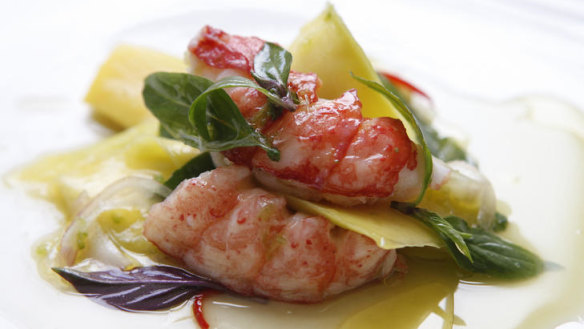
Marron
What is it?
The Latin family name should tell you everything you need to know about this angry-looking freshwater crayfish: Cherax destructor. They can be found bathing in shallow muddy water and streams but if you were to buy a live one from the market, it's extremely likely it'll be a farmed product, grown in South Australia or Western Australia.
Why is it special?
The sweet, firm meat has a buttery richness to it with little to no oiliness. Fishing for them is tightly regulated and much like abalone, the bag limit is modest.
How do I prepare it?
There's certainly a danger factor with these guys, because of their sharp claws, but the most humane way to kill them, according to the Sydney Fish Market, is to put them in the freezer to chill for about 30 minutes. That's long enough to render them insensible, but not long enough to freeze them through. After that, quickly split them down the middle with a sharp knife and pop them on the grill, or drop them into rapidly boiling water for three to five minutes (depending on size) until the shell turns red.
How do I eat it?
Few things in this world are quite as delicious as a butter-poached marron sandwich, but if you're looking to minimise the calorie intake, consider barbecuing it split lengthways for two minutes each side until the flesh is firm and white and serving with olive oil and a squeeze of lime, or slice the boiled meat and arrange on top of a salad. It can also be eaten raw. Try this recipe for Barbecued marron with Thai green mango salad.
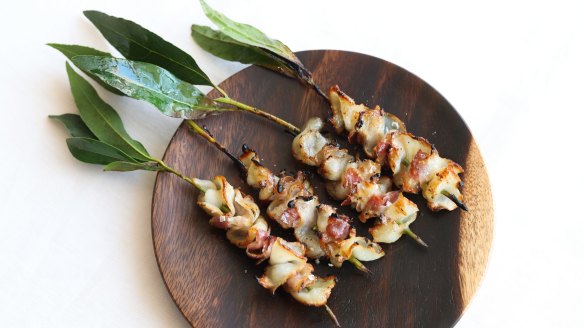
Abalone
What is it?
It's one of Australia's most highly valued seafood species (the meat can fetch up to $100 a kilogram), and no wonder when you hear what divers go through to get them (heart attacks! Shark attacks! Kelp attacks!). If you haven't eaten one of these luxurious sea creatures, you've probably seen their swirly pearlescent shells (some people call them sea ears) washed up on a beach or made into jewellery.
Why is it special?
There just aren't that many of them, and they only grow in certain parts of the world, which jacks the price. Luckily in Australia, there are 18 species of abalone (the two most common on menus are blacklip and greenlip) that live on the rocks around much of the coastline. It's legal to dive for them yourself if you have a recreational fishing licence – check your local bag limit, which can vary from two to 20, depending on where you're diving.
How do I prepare it?
Place them in iced water for 30 minutes to kill them. Cut around the perimeter, taking care to slice firmly through the tissue that connects the flesh to the shell. Put flesh in a plastic bag and whack a few times with a rolling pin to tenderise.
How do I eat it?
Using your sharpest blade, cut it into the finest slices you can manage and barbecue on an oiled hotplate until charred and curly. Chef Neil Perry's favourite method is to keep them in their shell, sprinkle them with sake, mirin and sea salt, and gently steam for about two hours. He uses a spoon to remove them from the shell, removes the liver and beak, and slices the flesh into chunks, finishing with extra virgin olive oil and lemon juice. Or try this stir-fried abalone, snow pea and oyster mushroom recipe.
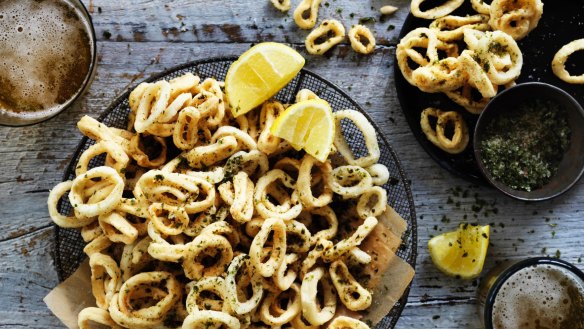
Squid
What is it?
Often confused with its cousins, calamari and cuttlefish, squid is identifiable by the small arrow-like fins on the top of its head. It is smaller and more flexible than cuttlefish, which has an internal bone, and tends to be cheaper – though a little tougher – than calamari.
Why is it special?
Australian squid are mostly caught usinglow-impact jigs, so are one of the more sustainable seafood choices. They take only minutes to cook and their mild flavour and easy-to-eat rings make them great entry-level seafood for kids.
How do I prepare it?
If you've caught your own or bought one whole from the market, this is the messy part; aprons are non-negotiable. Gently pull the tentacles out from the main body and remove the innards and the hard, transparent quill. Cut the squid below the eyes, taking care not to cut into that explosive ink sac. Pull out and discard the head and hard beak from the tube. Peel off the purple membrane and trim the fins. If you want to use the ink, puncture the ink sac, squeeze the liquid into a small jar and refrigerate for up to two days or freeze until needed.
How do I eat it?
Cut the tube into rings, lightly dust in seasoned cornflour and shallow-fry in oil over a very high heat for two minutes. You can also stuff the tube with your favourite risotto mixture and bake for 15 minutes. Or try Adam Liaw's recipe for crispy squid with nori salt.
The best recipes from Australia's leading chefs straight to your inbox.
Sign up